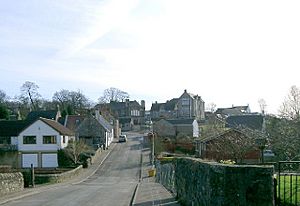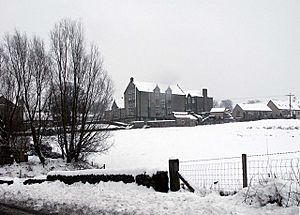Saline, Fife facts for kids
Quick facts for kids Saline |
|
|---|---|
| Population | 1,370 (2020) |
| OS grid reference | NT022924 |
| Council area | |
| Country | Scotland |
| Sovereign state | United Kingdom |
| Police | Fife |
| Fire | Fife |
| Ambulance | Scottish |
| EU Parliament | Scotland |
| UK Parliament |
|
| Scottish Parliament |
|
Saline is a lovely village and parish located in Fife, Scotland. It sits about 5 miles (8 km) northwest of Dunfermline. The village is built high up on the western slopes of the Cleish Hills.
In 2001, about 1,188 people lived in Saline. The village has a primary school, a church, and a golf course. A small valley, called a glen, runs from the main street down to the nearby village of Steelend. The wider area of the parish had a population of 1,762 people in 2011.
To the east of Saline, you'll see Saline Hill, which is 359 meters (1,178 feet) tall. There's an old hill fort on its eastern peak. A smaller hill to the southeast, called Bandrum, has a standing stone at its top.
Contents
A Look at Saline's History
Early Days and Weaving Traditions
Before the Reformation (a big change in the church), the church in Saline was managed by Dunkeld Cathedral. Saline used to be a busy place for weaving cloth.
During the 1800s and 1900s, many towns around Saline grew because of coal mining. However, Saline didn't change much. This means that many of its old buildings, especially weavers' cottages from the 1700s, are still standing. These buildings are now protected as listed buildings.
The Parish Church and Its Design
The main parish church in Saline was first designed in 1808 by an architect named William Stark. Later, in 1905, it was updated by Peter MacGregor Chalmers, an architect from Glasgow. After a big event called the Disruption of 1843 (when some church members left), a new Free Church was built on Bridge Street by Lewis Mercer.
Famous People from Saline
Saline has been home to some interesting people over the years.
- Thomas Bonnar (1821–1862) was an architect who was born here.
- John Barrowman (died 1860) was an inventor who created the Barrowman plough. He lived in Saline.
See also
 In Spanish: Saline (Fife) para niños
In Spanish: Saline (Fife) para niños




